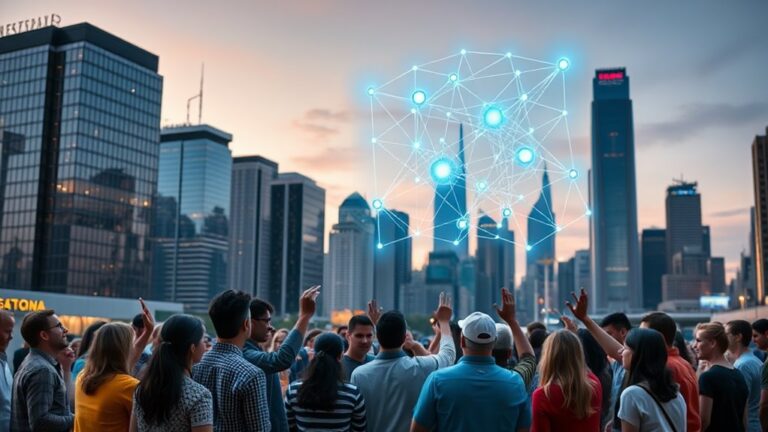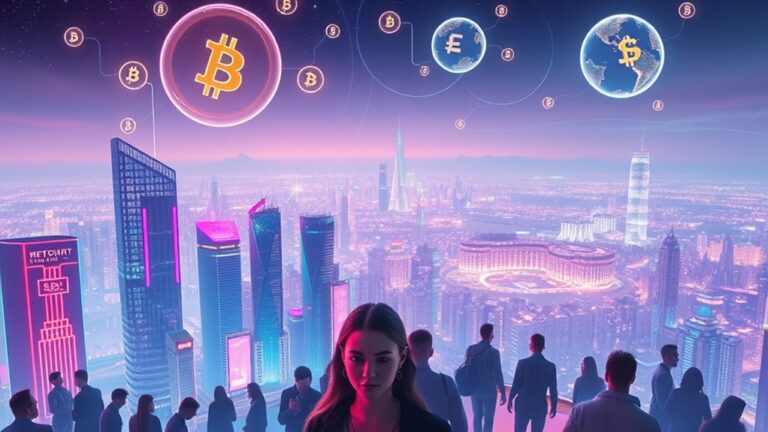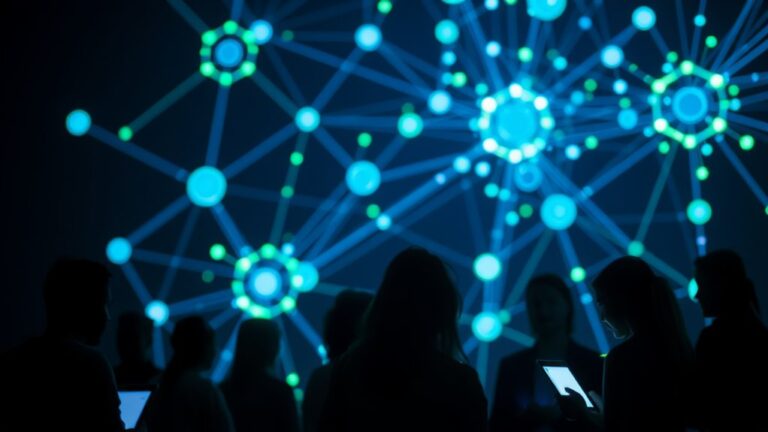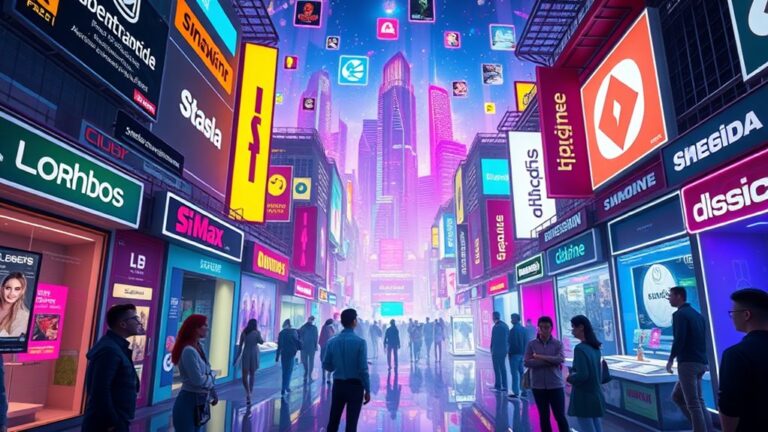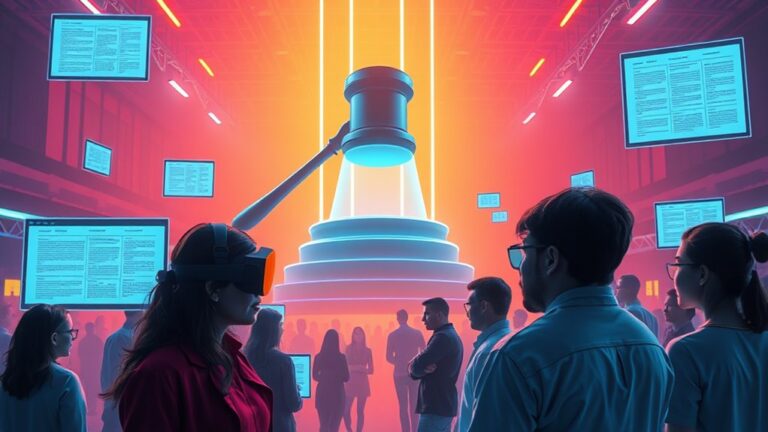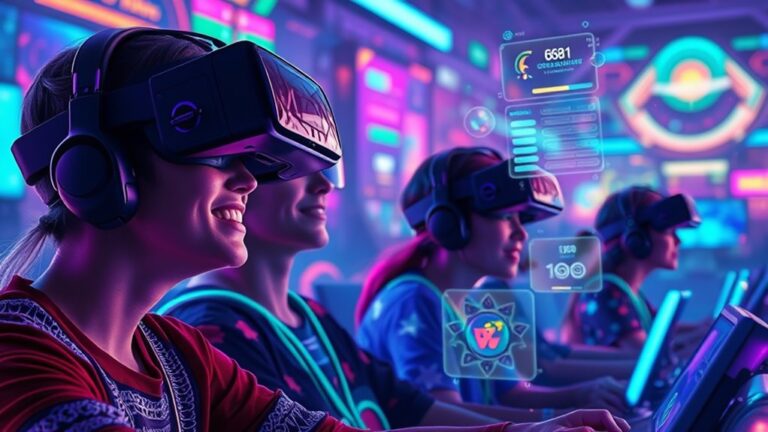
Future of Web3 and Metaverse Innovations: Top Emerging Trends
The future of Web3 and metaverse innovations will focus on the increasing adoption of decentralized technologies, transforming various sectors. Enhanced user experiences through AR and VR will create immersive environments. The rise of decentralized finance (DeFi) will offer new economic opportunities and broader access to financial services. Evolving regulatory frameworks will shape developments in governance and security. Additionally, innovations in blockchain and smart contracts will improve transaction processes, leading to the expansion of virtual economies and markets. Further insights await.
Key Takeaways
- The Web3 market is projected to reach USD 81.5 billion by 2030, driven by decentralized platforms enhancing data privacy and control.
- The metaverse market is expected to grow to $678.8 billion by 2030, fueled by demand for immersive AR and VR experiences.
- Decentralized Finance (DeFi) is on the rise, with a projected market value of $351.75 billion by 2031, promoting financial inclusion and innovation.
- NFTs are redefining ownership in digital spaces, offering unique verification of assets and facilitating secure ownership transfers via smart contracts.
- Decentralized Autonomous Organizations (DAOs) empower community-driven governance, enhancing transparency and collaboration within digital ecosystems.
Growing Adoption of Web3 Technologies
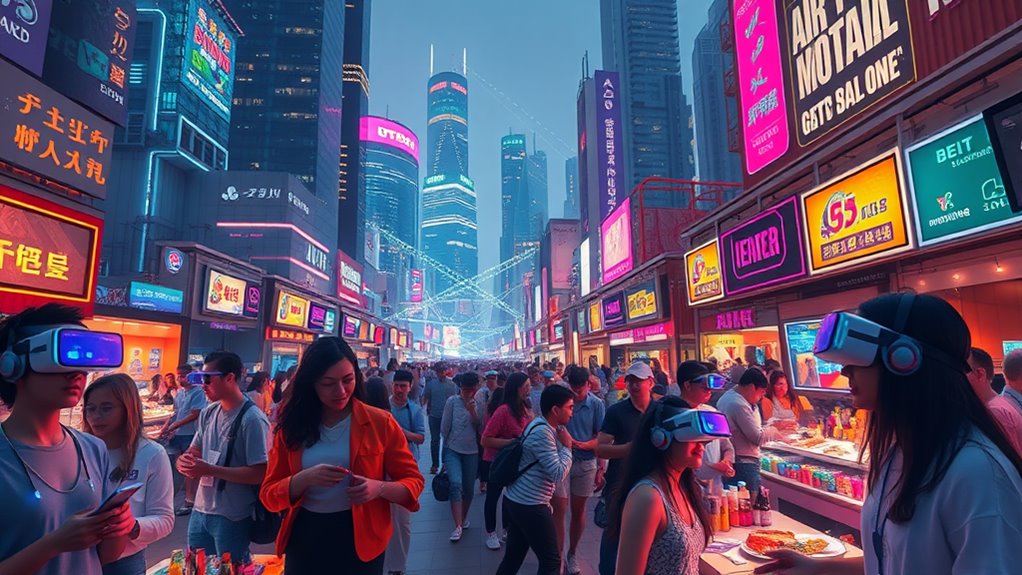
The growing adoption of Web3 technologies represents a significant shift in how individuals and businesses interact with digital platforms.
The global Web3 market is projected to reach USD 81.5 billion by 2030, with a compound annual growth rate of 43.7%. Over 3,200 startups and 17,000 companies are currently involved, contributing to an annual growth rate of 28%.
The Web3 market is set to soar to USD 81.5 billion by 2030, driven by rapid startup growth and innovation.
As users seek better data privacy and control, decentralized platforms are gaining popularity. Technologies such as layer-2 protocols and high-performance chains are addressing scalability issues, enhancing efficiency.
Real-world applications of Web3 span sectors like finance, e-commerce, and healthcare, leveraging blockchain for improved security and decentralization. This ongoing evolution indicates a transformative era for digital interactions and business practices, as the integration of cryptocurrencies in virtual economies continues to shape the future landscape of digital commerce.
Enhanced User Experiences Through AR and VR
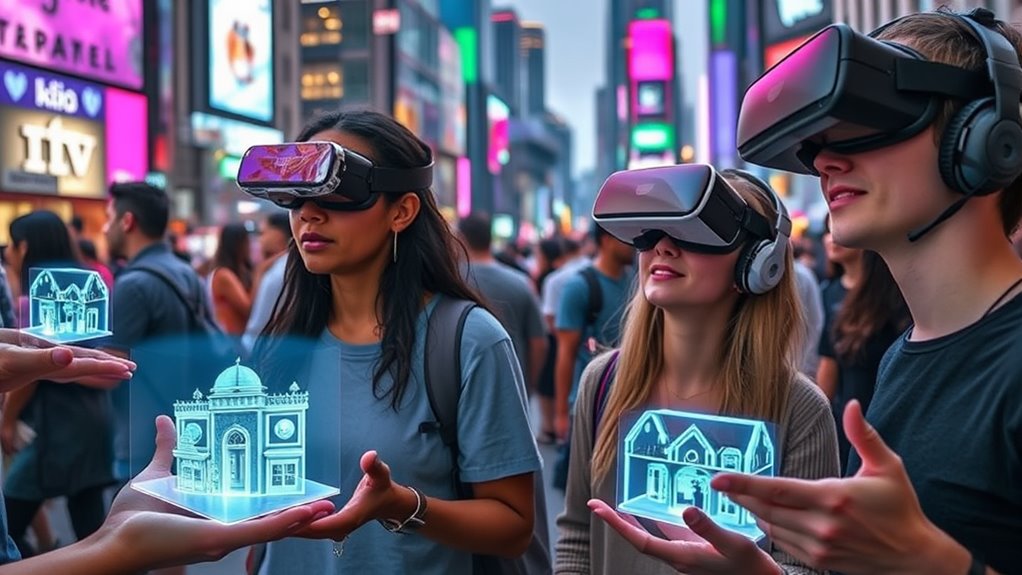
As augmented reality (AR) and virtual reality (VR) technologies continue to evolve, they considerably enhance user experiences across various domains.
These innovations offer enhanced immersion by integrating artificial intelligence, which processes large data sets for realistic simulations and user interactions. AR enriches experiences with multisensory elements, while VR creates interactive environments that closely mimic real life.
Market trends indicate a significant growth potential, with the metaverse expected to reach $678.8 billion by 2030, fueled by demand for immersive experiences.
Additionally, technological advancements in both hardware and software are essential for delivering high-quality AR and VR encounters.
Decentralized Finance and Economic Opportunities

Innovations in augmented reality (AR) and virtual reality (VR) have set the stage for new economic landscapes, particularly in the domain of decentralized finance (DeFi).
The global DeFi market is projected to reach $351.75 billion by 2031, growing at a remarkable rate. Decentralized exchanges (DEXs) are becoming essential, allowing users to trade without intermediaries.
Additionally, stablecoins are improving transaction stability, while DeFi lending platforms like Compound and Aave are introducing innovative features. This ecosystem enhances financial inclusion, enabling faster, more affordable services worldwide.
DeFi also streamlines cross-border transactions, reducing costs and time. With blockchain scalability improvements and a supportive regulatory environment, the future of DeFi presents numerous economic opportunities for diverse users globally. Furthermore, the growing popularity of decentralized exchanges is helping to facilitate direct peer-to-peer transactions, further empowering users in the DeFi space.
Regulatory Frameworks Shaping the Future
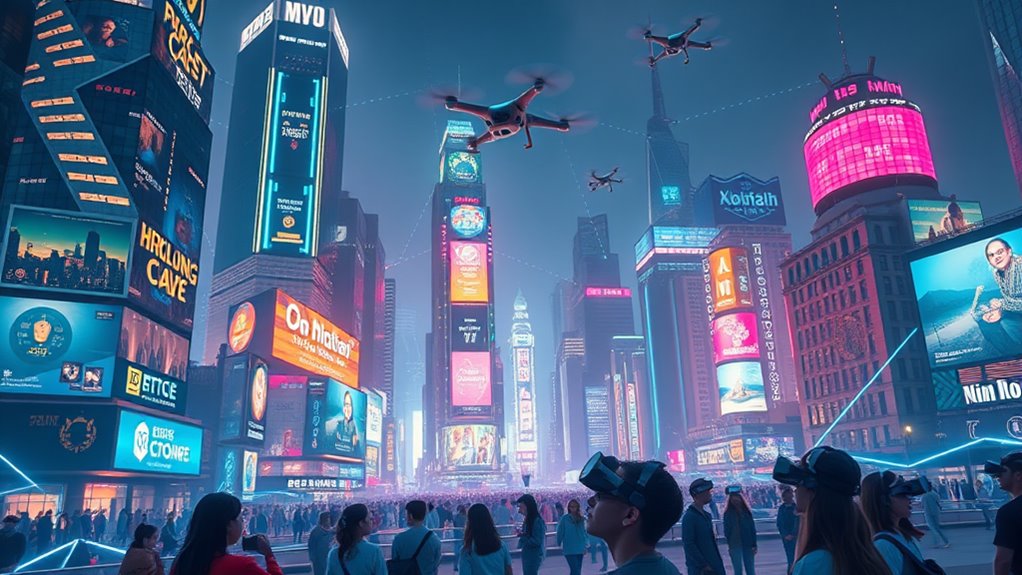
Regulatory frameworks are increasingly crucial in guiding the development of Web3 and metaverse technologies, which present unique challenges and opportunities. Various regulatory bodies are working to create guidelines that balance innovation with consumer protection. Key regulations, such as the EU’s Digital Services Act and the UK’s Digital Securities Sandbox, aim to establish a flexible yet structured approach.
| Regulatory Focus | Key Regulations |
|---|---|
| Data Protection | EU Digital Services Act |
| Cybersecurity Standards | Cyber Resilience Act |
| Decentralized Transactions | U.S. Cryptocurrency Regulations |
| Innovation Support | UK Digital Securities Sandbox |
These frameworks must adapt to technological changes while addressing risks associated with governance and privacy in decentralized systems. Stakeholder engagement is essential for effective policy development.
Interoperability Between Web2 and Web3 Ecosystems
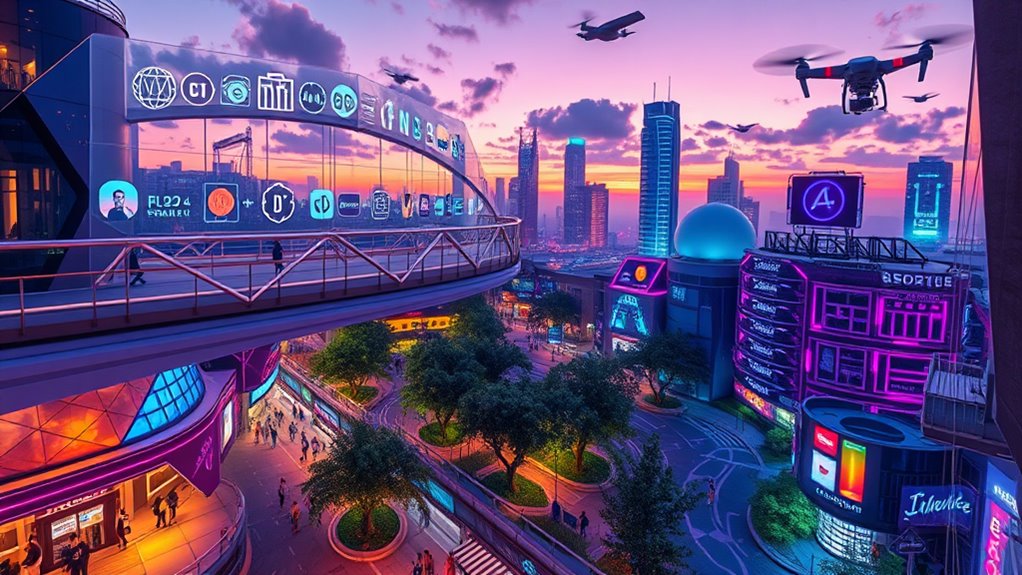
Interoperability between Web2 and Web3 ecosystems plays an essential role in bridging the gap between traditional centralized systems and emerging decentralized technologies.
Interoperability between Web2 and Web3 is crucial for connecting traditional systems with decentralized technologies.
This connection enhances user experience and broadens market reach by allowing seamless interaction.
Key aspects of this interoperability include:
- Cross-Platform Functionality: Users can easily switch between Web2 and Web3 platforms.
- Decentralized Identity: Tokenized identities can be used across different services, improving security.
- E-commerce Integration: Businesses can accept both fiat and cryptocurrency payments, expanding their customer base.
- Domain Innovations: Systems like .box enhance security and functionality, linking Web3 domains to traditional web addresses.
These developments are vital for increasing the accessibility and acceptance of Web3 technologies among users.
Innovations in Blockchain and Smart Contracts
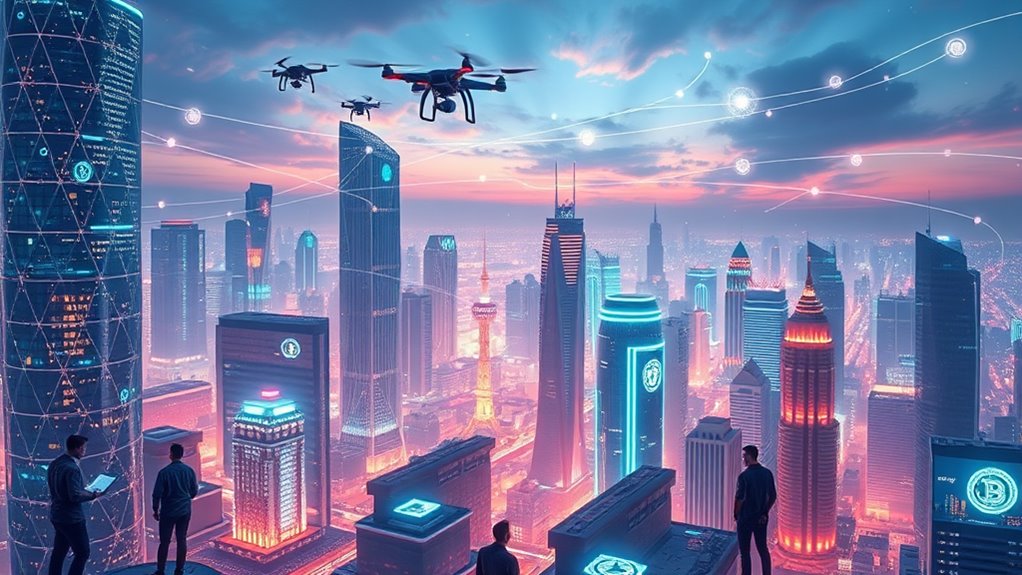
Innovations in blockchain and smart contracts are transforming transaction processes by enabling enhanced automation and improving scalability solutions.
These advancements allow for more efficient handling of digital assets while providing users with greater control over NFT ownership. As blockchain technology continues to evolve, these developments are likely to play a significant role in shaping future applications across various industries, especially as platforms like Ethereum leverage smart contracts to automate and secure transactions.
Enhanced Transaction Automation
Enhanced transaction automation represents a significant advancement in the domain of blockchain and smart contracts, fundamentally transforming how transactions are processed. This innovation enhances efficiency and security through various mechanisms:
- Decentralized Architecture: Reduces reliance on intermediaries, streamlining processing.
- Immutable Ledger: Guarantees that all transactions are secure and trustworthy.
- Smart Contract Automation: Executes transactions automatically based on predefined conditions, eliminating manual work.
- Cost Efficiency: Off-chain processing lowers costs associated with traditional operations.
These features lead to real-time transaction processing, improving financial systems and promoting transparency.
By employing “if-this-then-that” logic, smart contracts can manage complex tasks autonomously, making automated transactions not only faster but also more reliable. This evolution is vital for businesses aiming to enhance their operational efficiency, as it aligns with the principles of decentralized finance that promote a more open and equitable financial ecosystem.
Improved Scalability Solutions
As transaction automation has advanced, the need for improved scalability solutions in blockchain technology has become increasingly apparent.
Layer 1 innovations, such as sharding and new consensus methods, aim to enhance scalability at the foundational level. Increasing block sizes, as exemplified by Bitcoin Cash’s expansion from 1 MB to 32 MB, allows for greater transaction throughput. However, these methods may introduce centralization risks by reducing the number of required nodes.
Layer 2 solutions, including Rollups and state channels, improve transaction efficiency and reduce fees. The shift towards Proof of Stake, as seen in Ethereum 2.0, enhances security while reducing energy consumption.
Together, these innovations represent critical advancements in addressing the scalability challenges faced by blockchain networks.
NFT Ownership Control
How can blockchain technology redefine ownership in the digital domain? NFT ownership control is revolutionizing how digital assets are created, managed, and transferred.
By integrating smart contracts, NFTs gain unique identifiers and metadata, ensuring their originality. Key aspects of NFT ownership include:
- Unique Token ID: Each NFT has a distinctive token ID, verifying its uniqueness.
- Secure Ownership Transfer: Smart contracts facilitate safe trading of NFTs on blockchain networks.
- Interoperability: Protocols like ERC-721 enable NFTs to be recognized across various platforms.
- Legal Clarity: While ownership of an NFT does not equate to copyright, smart contracts can outline specific rights and royalties.
This innovative approach enhances the security and functionality of digital ownership, making NFTs a crucial part of the evolving digital landscape.
The Expansion of Virtual Economies and Markets
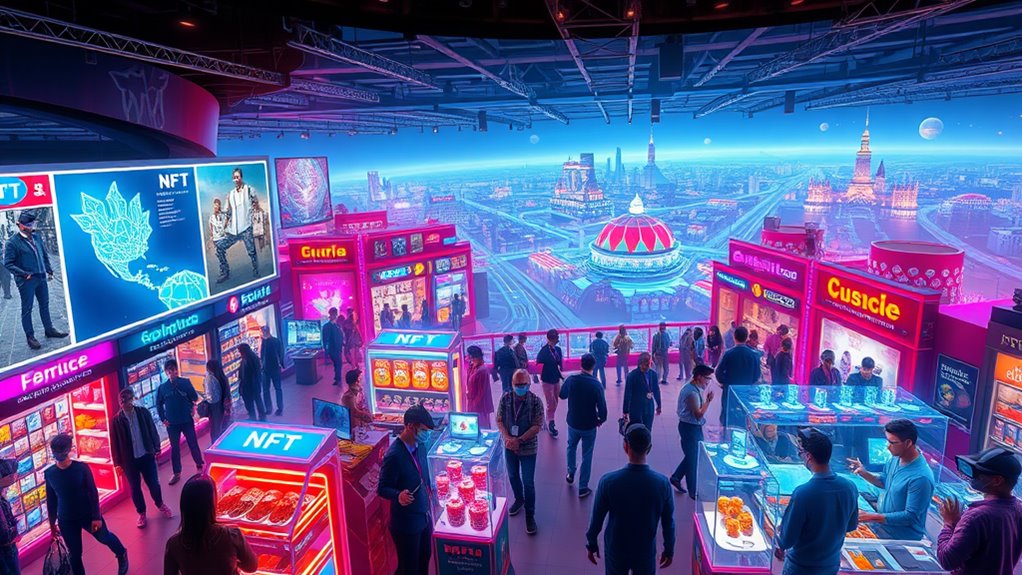
The expansion of virtual economies and markets represents a significant shift in how digital assets are valued and traded. As the metaverse is projected to reach a market size of $678 billion by 2030, the role of non-fungible tokens (NFTs) becomes essential. These tokens provide ownership of unique digital assets, bridging the gap between virtual and real economies. Blockchain technology enhances trust through secure transactions, while decentralized finance (DeFi) democratizes access to financial services. In addition, decentralized autonomous organizations (DAOs) offer users a voice in governance.
| Key Elements | Impacts |
|---|---|
| Market Growth | $678 billion by 2030 |
| Role of NFTs | Ownership of digital assets |
| Blockchain Integration | Secure, transparent transactions |
| DeFi Expansion | Financial inclusion |
Frequently Asked Questions
How Will Web3 Impact Digital Privacy for Users?
Web3 greatly enhances digital privacy for users by decentralizing data control, facilitating consent-based sharing, and utilizing advanced cryptographic techniques. This shift empowers individuals to manage their personal information securely, fostering transparency and trust in digital interactions.
What Skills Are Needed for Careers in the Metaverse?
In a rapidly evolving landscape, crucial skills for metaverse careers include VR/AR development, programming expertise, and 3D modeling. Non-technical skills like communication and adaptability are equally important for traversing complex virtual interactions and environments.
How Can Businesses Leverage the Metaverse for Marketing?
Businesses can leverage the metaverse for marketing by establishing immersive brand experiences, engaging communities, utilizing SEO strategies, and creating interactive content. This approach enhances consumer interaction and fosters community building, driving deeper connections and brand loyalty.
What Challenges Do Users Face When Entering the Metaverse?
Users entering the metaverse encounter significant challenges, including inadequate identity verification, privacy risks, digital exclusion, and harassment. Additionally, technical issues like scalability and interoperability further complicate their experiences, hindering widespread adoption and user trust.
How Will NFTS Influence Traditional Art and Media Industries?
In a gallery where canvases breathe, NFTs emerge as vibrant brushstrokes, redefining the art landscape. They empower artists, democratize access, and challenge traditional norms, igniting a renaissance that melds digital innovation with timeless creativity.
Conclusion
In the domain of digital innovation, Web3 and the metaverse are akin to a grand tapestry, woven from threads of emerging technologies and user experiences. As these advancements unfold, they shape a new economic landscape, rich with opportunities. Regulatory frameworks act as the loom, guiding the creation of this intricate design. With interoperability and blockchain innovations enhancing connectivity, the future promises a vibrant marketplace where virtual economies thrive, inviting all to engage in this evolving digital narrative.

